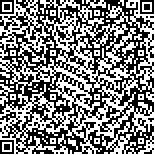亚尔肯•阿吉,许辉,木合塔尔•霍加,努尔麦麦提•尤鲁瓦斯.维吾尔族腭咽闭合不全患者浊塞音的声学特征分析[J].中华物理医学与康复杂志,2017,39(3):180-183
扫码阅读全文

|
| 维吾尔族腭咽闭合不全患者浊塞音的声学特征分析 |
|
| |
| DOI: |
| 中文关键词: 腭咽闭合不全 浊塞音 维吾尔语 语音语料库 声学特征 |
| 英文关键词: Velopharyngeal insufficiency Plosive consonants Uyghur language Speech corpuses Acoustic features |
| 基金项目:新疆维吾尔自治区自然科学基金资助项目(2015211C203) |
|
| 摘要点击次数: 3463 |
| 全文下载次数: 4869 |
| 中文摘要: |
| 目的分析维吾尔语中浊塞音在维吾尔族腭裂术后腭咽闭合不全患者发音中的声学特征。 方法从我科建立的“维吾尔族儿童跟读语音语料库”及“维吾尔族腭裂术后患者跟读语音语料库”中选取维吾尔族正常儿童31例(正常组)和维吾尔族腭咽闭合不全患儿28例(VPI组)。采集2组受试者跟读包含浊塞音/b/、/d/、/g/的9个词的录音样本,并应用PRAAT软件分别比较和分析2组受试者录音样本中的辅音时长(CD)、音强(CA)、第一共振峰(VF1)、第二共振峰(VF2)、第三共振峰(VF3)、第四共振峰(VF4)以及嗓音起始时间(VOT)。 结果2组受试者跟读浊塞音/b/的参数比较,VPI组的VF1、VF3和VF4均显著低于正常组,差异均有统计学意义(P<0.05);VPI组的CD显著长于正常组,差异有统计学意义(P<0.05)。2组受试者跟读浊塞音/d/和/g/的参数比较,VPI组的VF1、VF3和CD与正常组比较,差异均有统计学意义(P<0.05)。正常组/b/、/d/和/g/ 3个浊塞音的VOT分别为(0.12±0.05)s、(0.10±0.03)s和(0.09±0.03)s,出现率均为100%,浊塞音VOT和出现百分比与VPI组比较,差异均有统计学意义(P<0.05)。 结论维吾尔语中3个浊塞音/b/,/d/,/g/在腭咽闭合不全患儿与正常儿童语音声学特征之间存在显著差异。 |
| 英文摘要: |
| Objective To analyze the acoustic features of plosive consonants in Uyghur as spoken by persons with post-palatoplasty velopharyngeal insufficiency. Methods Thirty-one Uyghur-speaking children without a speech disorder were selected as a control group, while 28 others with velopharyngeal insufficiency (VPI) formed the VPI group. All were recorded speaking 9 Uyghur words which contain the plosive consonants /b/, /d/ and /g/. The consonants′ duration (CD), amplitude (CA), their first formants (VF1), second formants (VF2), third formants (VF3) and fourth formants (VF4) as voiced as well as the voice onset time (VOT) were measured and analyzed using the PRAAT software for the two groups. ResultsThe VF1, VF3 and VF4 of the plosive consonant /b/ were significantly lower for those in the VPI group than among the controls, and the CD of /b/ was significantly longer. There were also significant differences between the two groups in terms of the VF1s, VF3s and CDs of the other plosive consonants. The VOTs of the consonant /b/,/d/ and /g/ were (0.12±0.05)s, (0.10±0.03)s and (0.09±0.03)s, respectively, with an occurrence rate of up to 100% in the control group, significantly different from those in the VPI group (P<0.05). ConclusionThe acoustic features of the three plosive consonants /b/,/d/ and /g/ can distinguish Uyghur-speaking children with velopharyngeal insufficiency from those with normal speech. |
|
查看全文
查看/发表评论 下载PDF阅读器 |
| 关闭 |
|
|
|